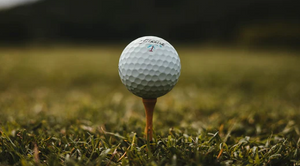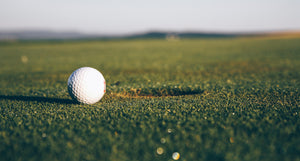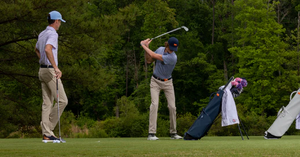How To Use a Chipper
A good golf game isn’t all about who can hit the ball the furthest. Sometimes, the shots with more control, a steady hand, and a certain finesse will alter your golfing game entirely. That’s where the chipper comes in.
With a 30-37” loft, the chipper is for shots that are too long for a putter and too short for wedge clubs. Discover when and how to use a chipper to your advantage today!
When Should You Use a Chipper?
Unlike other clubs, the versatile chipper is fantastic for when you want to hit low-flying shots that’ll land on the green softly. That’s why people often use the chipper close to bunkers or when trying to create successful shots around obstacles. If you want to improve your short game, the chipper is the answer.
How To Use a Golf Chipper
Preparation
Any seasoned golfer will know that a successful round on the green is as much about the preparation as it is about shooting your shot. No matter how often you practice, your game won’t reach its full potential if you’re not using the proper grip, stance, or setting yourself up.
You can start by having your golf chipper positioned shoulder-width apart. Your feet should also adhere to the shoulder-width apart spacing, centering your weight over the middle of your feet. Then, find your target line; you want to be slightly open towards it.
Move onto your grip once you feel comfortable with your weighting and stance. Put both of your hands slightly inside of your front thigh and keep your hands close together. Maintaining your stance as you swing will create power and accuracy as you strike the ball.
Before taking to the green, consider practicing this setup and hitting as many balls as possible from different distances.
Stance & Positioning
Golfer David Leadbetter suggests that laying good foundations in golf is crucial in ensuring you’re hitting the ball right. Ultimately, you’ll only get the best out of your chosen club if you feel at ease in the proper posture and have the correct balance to take the shot.
Your feet should be about shoulder-width apart, a little wider for a firmer base, and you should evenly distribute your weight between your feet. It’s crucial to bend your knees, not lock them, to gain more stability when swinging.
Relaxing your hands and arms with a firm but comfortable foundation would be best. Of course, you need to retain some tension to generate a good amount of power (or your desired amount of energy) when you take the shot.
Grip & Alignment
Once you’ve found your desired stance and positioning, give your grip some attention. The nice thing about using a chipper is that your grip won’t alter compared to other clubs you may find in your bag. However, there is a good trick known as the “chipper golf” grip, so if you’re one of the 3.3 million golfing beginners, this might still feel like a confusing premise.
All the chipper-golf grip does is add more control. Rather than separating your hands, as you would most of the time, interlock your fingers or overlap your hands around the club. To keep the chipper face square, it’s essential that each hand feels as strong as the other, avoiding any unwanted twisting.
Ensure you align yourself with the golf ball and the target. Look at the ball and ensure that your left foot is a little back from the center if you're a right-handed player. That spacing will help create more power on impact. Of course, if you're left-handed, the opposite foot must have this alignment.
You’ll want to aim your body toward where you intend the ball to go to give your shot some direction and accuracy. But before you do, ensure your feet are 90 degrees to the path you want the ball to take. The perpendicular alignment of your feet will give you good balance and help promote consistency.
Technique
So you’ve got your stance, grip, and alignment sorted, but you'll struggle to get the desired results if you don’t have proper swing speed and technique. You’ll want to ensure you’ve practiced your backswing and downswing techniques.
When practicing your swing, your feet should be shoulder-width apart, have a comfortable grip, and your arms should bend without losing all the tension. When moving into the backswing, allow the balls of your feet to pivot. While keeping your arms straight, you should simultaneously turn through your shoulders. Then, keep your hands low to maintain consistency of contact.
After being comfortable with your backswing, move into the downswing, as you’ll likely not want to send the golf ball miles away. Thinking about technique rather than power is essential. It would be best to control the speed and the precision with which you hit the ball to execute successful shots.
If you’re right-handed, you’ll want to move forward onto your left foot as you drive your upper body toward the imaginary line you want the ball to go in. Your upper body should work while your hands and arms remain straight. It would be best not to rush the stroke; instead, take your time and control the motion smoothly.
Frequently Asked Questions
How Far Can You Hit With a Chipper?
Unlike two-way chippers, chippers are legal in pro golf, and golfers typically use them for shorter shots. However, you could hit a golf ball at least 30 yards away, as the chipper is surprisingly versatile. But how far a chipper sends a golf ball depends on individual technique.
Final Thoughts
Chippers are a great asset to any golfer’s bag, whether beginner or seasoned pro. However, the chipper doesn’t bring the magic; your stance, grip, alignment, and preparation are critical. So before heading out onto the green to practice your chipper-golf grip, ensure you’ve discovered all the golf gear and clothing Stitch Golf has to offer today!



